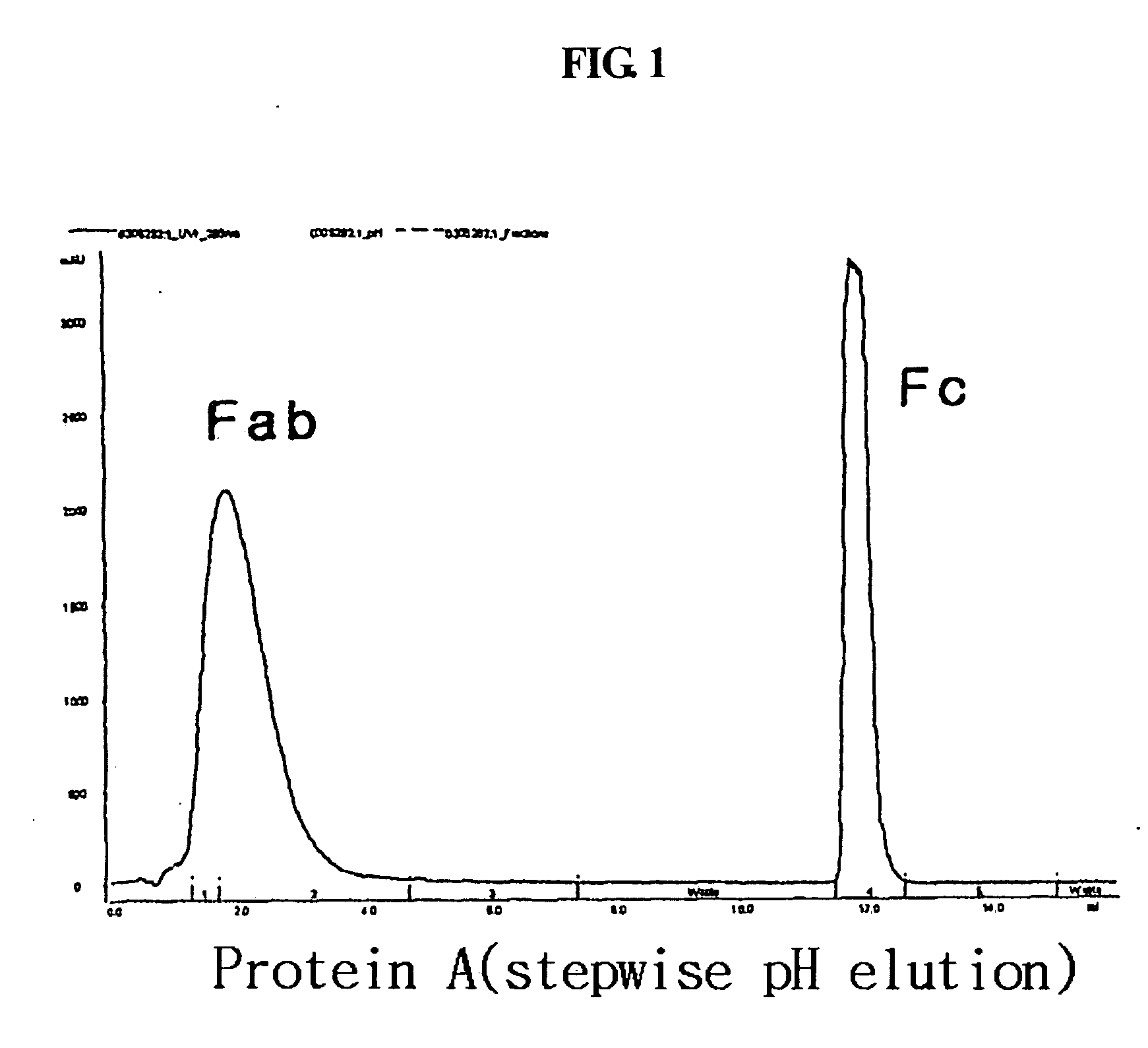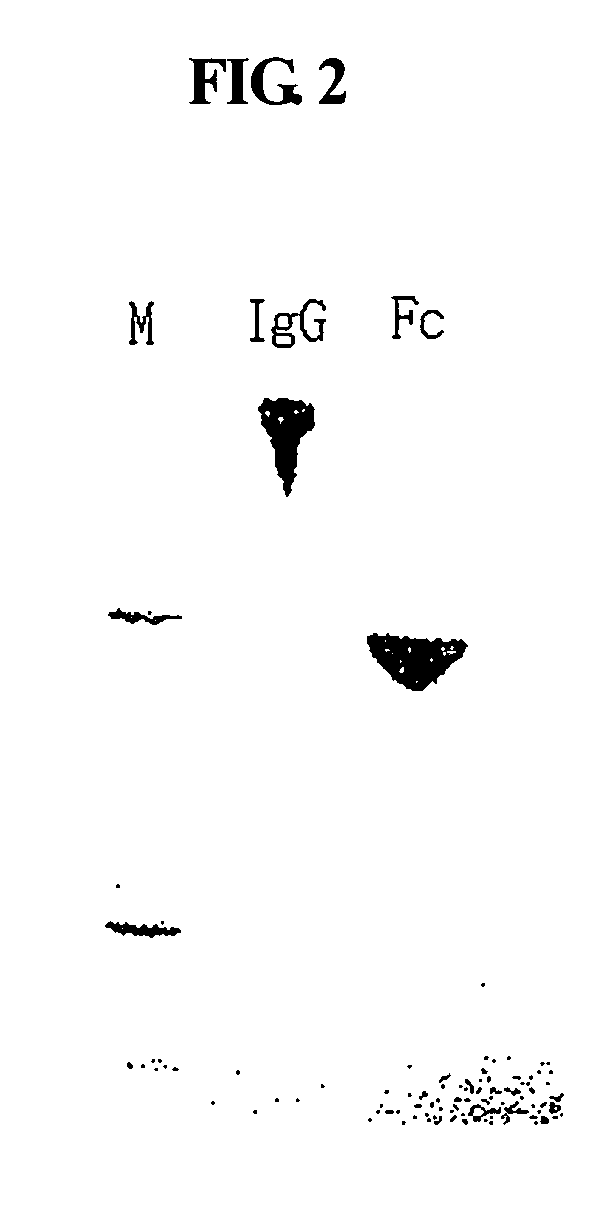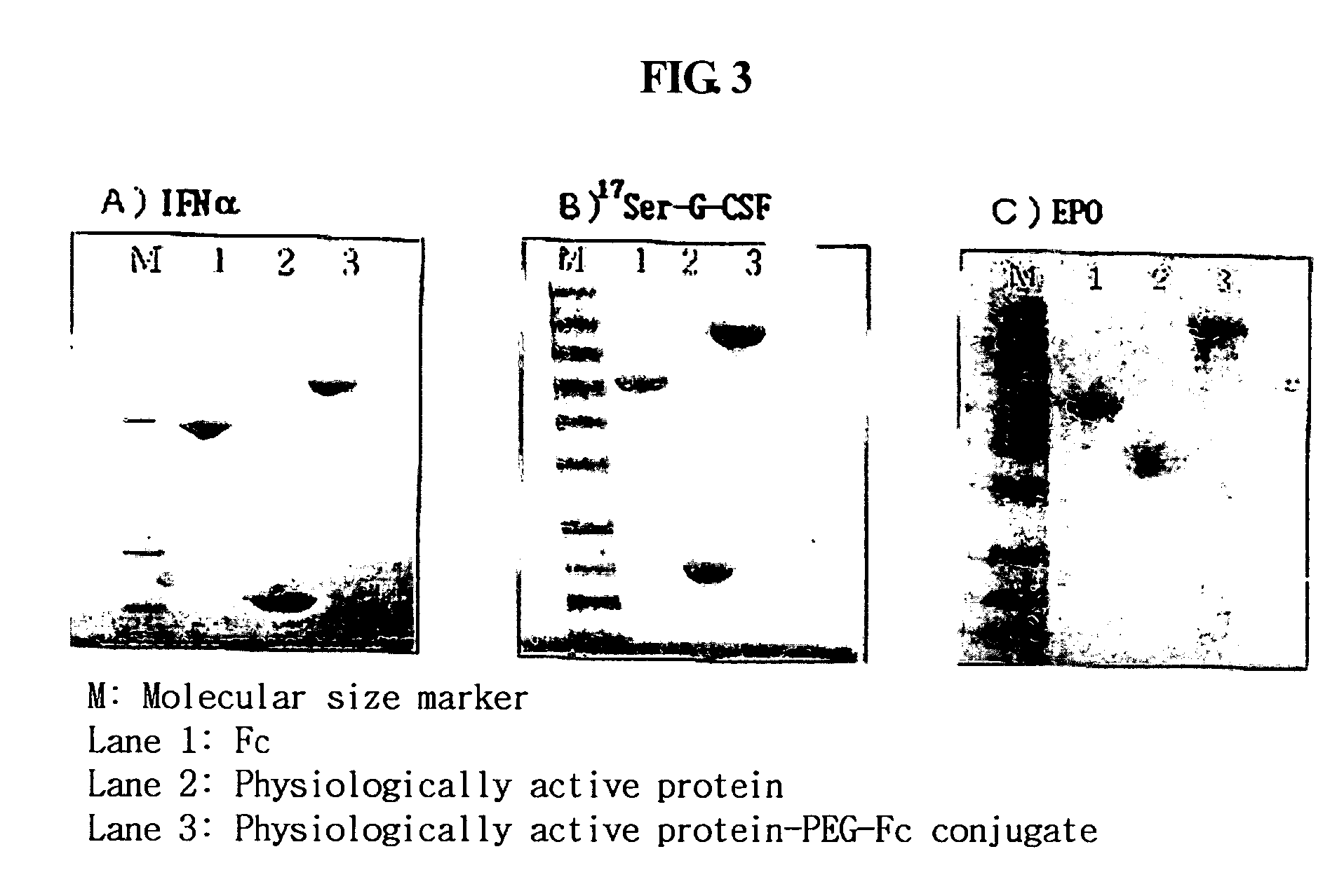Protein complex using an immunoglobulin fragment and method for the preparation thereof
a protein complex and immunoglobulin technology, applied in the field of protein conjugates, can solve the problems of reducing the number of titers of physiologically active proteins, reducing yield, and pain for patients, and achieves the effects of enhancing the serum half-life of polypeptides, minimizing activity reduction, and improving stability and the duration of physiological action
- Summary
- Abstract
- Description
- Claims
- Application Information
AI Technical Summary
Benefits of technology
Problems solved by technology
Method used
Image
Examples
example 1
Preparation I of IFNα-PEG-immunoglobulin Fc Fragment Conjugate
Preparation of Immunoglobulin Fc Fragment Using Immunoglobulin
[0091] An immunoglobulin Fc fragment was prepared as follows. 200 mg of 150-kDa immunoglobulin G (IgG) (Green Cross, Korea) dissolved in 10 mM phosphate buffer was treated with 2 mg of a proteolytic enzyme, papain (Sigma) at 37° C. for 2 hrs with gentle agitation. After the enzyme reaction, the immunoglobulin Fc fragment regenerated thus was subjected to chromatography for purification using sequentially a Superdex column, a protein A column and a cation exchange column. In detail, the reaction solution was loaded onto a Superdex 200 column (Pharmacia) equilibrated with 10 mM sodium phosphate buffer (PBS, pH 7.3), and the column was eluted with the same buffer at a flow rate of 1 ml / min. Unreacted immunoglobulin molecules (IgG) and F(ab′)2, which had a relatively high molecular weight compared to the immunoglobulin Fc fragment, were removed using their prope...
example 2
Preparation II of IFNα-PEG-Fc Protein Conjugate
Preparation of Fc-PEG Complex
[0095] 3.4-kDa polyethylene glycol having an aldehyde reactive group at both ends, ALD-PEG-ALD (Shearwater), was mixed with the immunoglobulin Fc fragment prepared in the step 1 of Example 1 at Fc:PEG molar ratios of 1:1, 1:2.5, 1:5, 1:10 and 1:20, wherein the Ig Fc fragment had been dissolved in 100 mM phosphate buffer in an amount of 15 mg / ml. To this mixture, a reducing agent, NaCNBH3 (Sigma), was added at a final concentration of 20 mM and was allowed to react at 4° C. for 3 hrs with gentle agitation. To obtain a 1:1 complex of PEG and Fc, the reaction mixture was subjected to size exclusion chromatography using a SuperdexR column (Pharmacia). The Fc-PEG complex was eluted from the column using 10 mM potassium phosphate buffer (pH 6.0) as an elution buffer, and immunoglobulin Fc fragment not linked to PEG, unreacted PEG and dimer byproducts where PEG was linked to two immunoglobulin Fc fragment molecu...
example 3
Preparation of hGH-PEG-Fc Conjugate
[0097] An hGH-PEG-Fc conjugate was prepared and purified according to the same method as in Example 1, except that drug other than interferon alpha, human growth hormone (hGH, MW: 22 kDa) was used and a hGH:PEG molar ratio was 1:5.
PUM
| Property | Measurement | Unit |
|---|---|---|
| Composition | aaaaa | aaaaa |
| Molar ratio | aaaaa | aaaaa |
| Stability | aaaaa | aaaaa |
Abstract
Description
Claims
Application Information
 Login to View More
Login to View More - R&D
- Intellectual Property
- Life Sciences
- Materials
- Tech Scout
- Unparalleled Data Quality
- Higher Quality Content
- 60% Fewer Hallucinations
Browse by: Latest US Patents, China's latest patents, Technical Efficacy Thesaurus, Application Domain, Technology Topic, Popular Technical Reports.
© 2025 PatSnap. All rights reserved.Legal|Privacy policy|Modern Slavery Act Transparency Statement|Sitemap|About US| Contact US: help@patsnap.com



